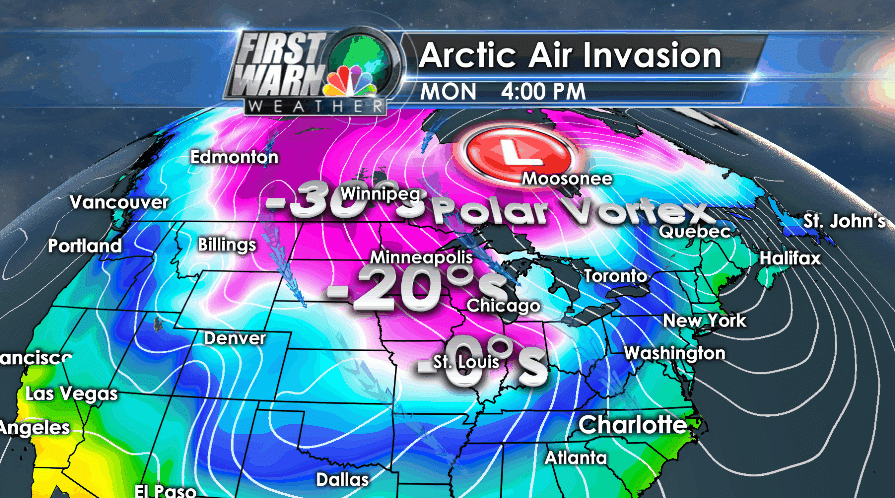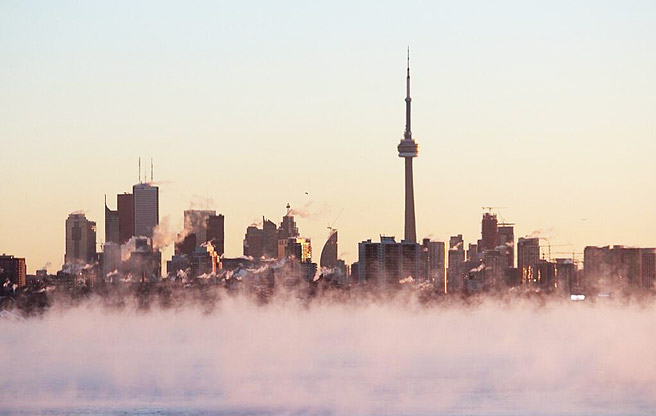July 8, 2014 – In the June 15 issue of Nature Climate Change, climatologist, Dr. James Screen, Mathematics Research Fellow, University of Exeter, has submitted an article entitled Arctic amplification decreases temperature variance in northern mid-to high-latitudes. The author begins by stating, “there is a common perception and growing concern that human-induced climate change will lead to more volatile and extreme weather.”
He goes to describe a prevailing theory that explains last winter’s polar vortex (see below a sample of last winter in the weather map from mid-January 2014) that hung over much of eastern North America. That theory is known as Arctic amplification. It hypothesizes that Arctic warming being greater than lower latitudes is altering the flow of the jet stream resulting in cold extremes being pushed south.
But the data in the study points to something very different. Overall it appears that cold pulses are actually on the decrease in the mid-latitudes of Northern Hemisphere and that Arctic amplification is actually reducing seasonal temperature variance. That’s because atmospheric circulation patterns point out that northerly winds and associated cold days are getting warmer far more rapidly than southerly winds and warm days. In the article Screen’s actual words state, “cold days tend to occur when the wind is blowing from the north, bringing Arctic air south into the mid-latitudes. Because the Arctic air is warming so rapidly these cold days are now less cold than they were in the past.”
The mathematical models Screen has developed indicate a trend that should continue into the future predicting declining temperature variability in cold months but not in the summer. One caveat to all of this. The Arctic represents a very complex Earth climate system and no mathematical model to date fully reflects all the linkages and variables related to sea ice loss, reduced snow coverage, permafrost melt and methane emissions as well as atmospheric circulation. So much more work needs to be done before we can be absolutely certain that Screen’s predictions will actually be right on.
But for those of us who endured one of Eastern North America’s coldest winters of late, Toronto’s second coldest in 25 years, we may take hope that future winters won’t approach the severity of this last one.














